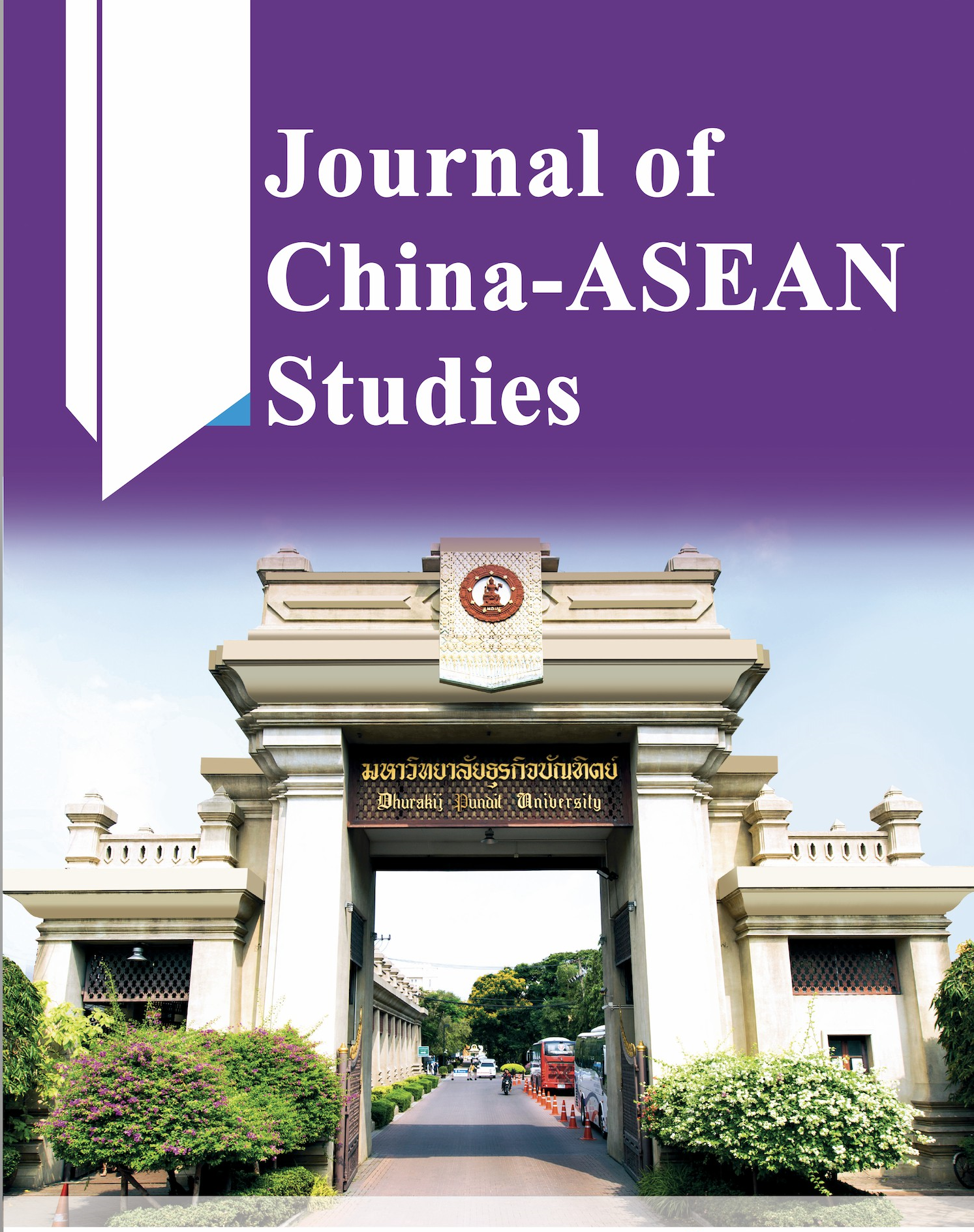The Influence of College Students’ Playfulness on Innovation Behavior in Shandong Province: The Mediating Variable of Positive Emotion
Abstract
The purpose of this study is to explore the influence of different background variables on
innovation behavior of college students in Shandong Province. Based on the theory of positive
psychology, this paper explores the relationship between the three variables and the mediating
effect of positive emotions. A questionnaire survey is conducted among 435 college students
from three universities in Shandong Province by convenient sampling. The results show that:
1. Shandong college students’ playfulness has a positive and significant impact on innovation
behavior. 2. Shandong college students’ playfulness has a significant positive effect on positive
emotion. 3. The positive emotion of college students in Shandong Province has a significant
positive impact on innovation behavior. 4. The positive emotion of college students in
Shandong Province partially mediates the relationship between playfulness and innovation
behavior.
References
陈书梅(2015)。大学图书馆组织创新行为调查研究。教育资料与图书馆学,52(3),231-267。https://doi.org/1013090x-201509-201509150028-201509150028-231-267
陈馨茹(2020)。大学生玩兴及其与积极品质的关系研究 [硕士论文,上海师范大学]。教育论文网。http://www.51papers.com/lw/69/8/wz4591320.htm
邓爱敏(2010)。思想政治理论课促进大学生创造力提升的研究-以《思想道德修养与法律基础》课为例 [硕士论文,西南交通大学]。知网空间。https://cdmd.cnki.com.cn/Article/CDMD-10613-1013252049.htm
郭淑珍(2010)。 向心理学的意涵与学习上的应用。铭传教育电子期刊,(2),56-72。http://web.tep.mcu.edu.tw/sites/default/files/u3/15journal/2/%E6%AD%A3%E5%90%91%E5%BF%83%E7%90%86%E5%AD%B8%E7%9A%84%E6%84%8F%E6%B6%B5%E8%88%87%E5%AD%B8%E7%BF%92%E4%B8%8A%E7%9A%84%E6%87%89%E7%94%A8-%E9%83%AD%E6%B7%91%E7%8F%8D.pdf
高校招生网(2020)。中国优秀高校网络招生平台。http://www.baokao.net/
胡宝玲(2017)。导师支持、同学支持对研究生创新行为的影响:积极情绪的中介作用。黑龙江高教研究,(9),117-120。http://www.cnki.com.cn/Article/CJFDTotal- HLJG201709031.htm
黄惠君、叶玉珠(2008)。国中教师教学玩兴、教学动机、教学快乐感受与创意教学之关系。教育与心理研究,31(2),85-118。http://ericdata.com/tw/detail.aspx?no=51037
侯婷妤(2007)。我国青少年正向情绪及相关因素之研究 [硕士论文,国立高雄师范大学]。硕博士论文网。https://hdl.handle.net/11296/48635q
姜丽萍(2018)。高校创新氛围、大学生创新自我效能感、创新行为关系研究 [硕士论文,曲阜师范大学]。爱学术。https://www.ixueshu.com/document/994906362d7885de6084b2b298e475ef318947a18e7f9386.html
吕年禾(2017)。国中生玩兴动机与创造力关系之研究-以升学压力为为调节变项和创意自我效能为中介变项 [硕士论文,国立台湾大学]。 硕博士论文网。https://hdl.handle.net/11296/cw8e6j
李想(2020)。课堂创新氛围、创新角色认同与大学生创新行为关系研究。天津中德科技应用大学学报,(1),31-35。https://www.cnki.com.cn/Article/CJFDTotal-TJZD202001010.htm
沈硕彬(2008) 。正向心理学在教师教学上的应用。师说,203,4-8。
苏燕卿(2016)。公营银行主管正向情绪对柜台人员乐观度及幸福感之影响[硕士论文,南台科技大学]。硕博士论文网。https://hdl.handle.net/11296/y3vc8r
王升科(2012)。大学生创新能力培养的路径研究-基于人的全面发展理论[硕士论文,武汉科技大学]。道客巴巴。http://www.doc88.com/p-2117736212567.html
魏旭(2017)。山东省高校在校大学生的创新创业教育探究 [硕士论文,山东建筑大学]。爱学术 。https://www.ixueshu.com/document/2bf4da80914dcf5c16b46c8a0736e43e318947a18e7f9386.html
杨洁、张露、黄勇(2020)。互联网企业玩兴氛围对创新行为的跨层次作用机制。心理科学进展,28(4),523-534。http://journal.psych.ac.cn/xlkxjz/CN/Y2020/V28/I4/523
余嫔、吴静吉、林伟文、杨洁欣(2003) 。成人玩兴量表与组织玩兴气氛量表之发展。中国测验学会测验学刊,50(1),73-110。https://doi.org/10.7108/PT.200306.0073
郑娟(2019)。论高职生积极情绪的培养。智库时代,33,51-58。https://www.cnki.com.cn/Article/CJFDTOTAL-ZKSD201933051.htm
张倩、 郑涌(2003)。美国积极心理学介评。心理学探新,23(3), 6- 10。https://gb.oversea.cnki.net/kcms/detail/detailall.aspx?filename=xlxt200303002&dbcode=CJFD&dbname=CJFD2003
周文莉 、顾远东 、彭纪生 (2017)。创造力效能感,积极情绪与创新行为的关系研究。珞珈管理评论,16(4),76-88。 http://www.cqvip.com/qk/71990x/201704/76747176504849554852484854.html
张亚军、尚古琦(2019)。领导幽默对员工创造力的影响研究。领导科学,16,94-98。http://www.cnki.com.cn/Article/CJFDTotal-LDKI201916029.htm
Amabile, T. M. (1993). What does a theory of creativity require?. Psychological Inquiry, 4(3), 179-181. http://www.jstor.org/stable/1448959
Bagheri, A., & Akbari, M. (2018). The impact of entrepreneurial leadership on nurses’ innovation behavior. Journal of Nursing Scholarship. 50(1), 28-35. https://doi.org/10.1111/jnu.12354
Barnett, L. A. (2007). The nature of playfulness in young adults. Personality and Individual Differences, 43(4), 949-958.https://doi.org/10.1016/j.paid.2007.02.018
Bateson, P. (2014). Play, playfulness, creativity and innovation. Animal Behavior and Cognition, 1(12), 99-112. https:// doi.org/10.12966/abc.05.02.2014
Cappellen, P. V., Edwards, M. E., & Fredrickson, B. L. (2020). Upward spirals of positive emotions and religious behaviors. Current Opinion in Psychology, 40, 92-98 . https://doi.org/10.1016/j.copsyc.2020.09.004
Choi, J. N. (2004). Individual and contextual predictors of creative performance: The mediating role of psychological processes.Creativity Research Journal, 16(2), 187-199. https://doi.org/10.1080/10400419.2004.9651452
Coade, N. (1997). Be creative:The Toolkit for Business Success. Thomson Learning.
Csikszentmihalyi, M., & Seligman, M. E. (2000). Positive psychology: An introduction.American Psychologist, 55(1), 5-14. https://doi.org/10.1037//0003-066X.55.1.5
Glynn, M. A., & Webster, J. (1992). The adult playfulness scale: An initial assessment. Psychological Reports, 71(1) , 83-103. https://doi.org/10.2466/pr0.1992.71.1.83
Isen, A. M., Daubman, K. A., & Nowicki, G. P. (1987). Positive affect facilitates creative problem solving. Journal of Personality and Social Psychology, 52(6), 1122-1131.
Papousek, H., & Papousek, M. (1979). Early ontogeny of human social interaction: Its biological roots and social dimensions. Human Ethology, 456-478.Isen, A. M. (1999). On the relationship between affect and creative problem solving. Affect, Creative Experience, and Psychological Adjustment, 7(1), 3-1https://doi.org/10.1037/0022-3514.52.6.1122
Wagner, D. (2007). Learning to innovate. MIT Sloan Management Review, 49(1), 10-11.
Webster, E. J. (1989). Playfulness and Computers at Work[Master’s thesis, New York University]. Baidu Scholar. https://xueshu.baidu.com/usercenter/paper/show?paperid=1cbc293b f9b65b141cc7aa2655117c41&site=xueshu_se






